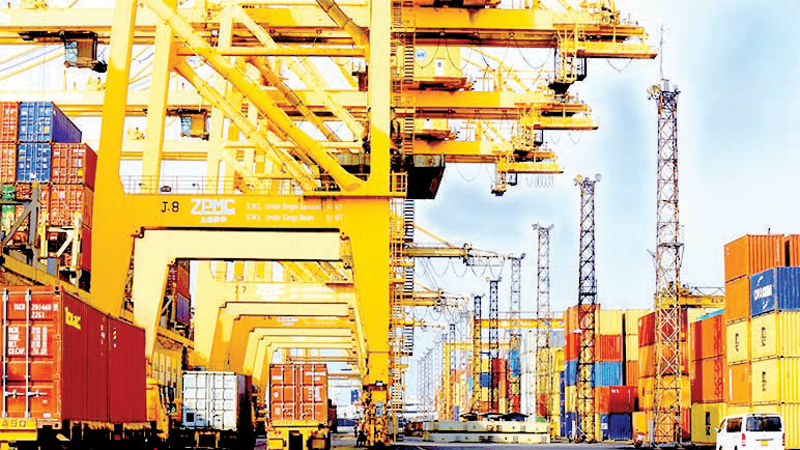The Central Bank said it will be closely monitoring developments in the US with regard to the Trump Administration’s trade tariff policies and how it would impact trade with Sri Lanka’s largest export market.
“We are vigilant about the possible outcome of the US tariff policy and its trickledown effect on our trade which has been favourable to Sri Lanka,” Central Bank Governor Dr. Nandalal Weerasinghe said during the second monetary policy media briefing for the year last week.
“We don’t see an immediate need to respond as it’s yet at an early stage. Sri Lanka’s exposure to the US market is small but we could benefit if there are trade diversions from other exporting nations to the US,” he said.
The US remains Sri Lanka’s largest export destination accounting for around 23 percent of the total merchandise exports. The total export value to the US was around USD 2.7 billion in 2023.
However, analysts of global trade have rung the alarm bells for pre-emptive measures to mitigate the negative impact of Trump tariffs which could affect us directly or indirectly.
The US announced new imports taxes of 25 percent tariffs on cars and car parts to the US from April 1.
Shares of the Japanese car market – Toyota, Nissan and Honda fell in early trade in Tokyo on Thursday.
Exporters raised concerns about the impact on cash flows if the current SVAT (Simplified Value Added Tax) system and the GSP Plus concessions are withdrawn.
“SVAT is not under our preview and a decision on GSP Plus will come into effect in two years time. So there is time for that. On the SVAT abolition a new tax system will be introduced by the Government,” the Governor said.
The financial sector watchdog left Overnight Policy Rates unchanged at 8.00%, as it thought that would be the best measure, considering domestic and global developments.
The Board remains confident that the prevailing monetary policy stance will ensure that inflation will move towards the target of 5% while supporting the growth of the domestic economy.
“Monetary policy is ‘appropriate’ right now as the economy and inflation are moving in line with our goals,” the Governor said as the rationale for rates to stay put under deflationary conditions.
Inflation – the rate at which the price of goods and services rise over a period of time is not the same in Sri Lanka’s informal economy which is not captured fully in making inflation estimates.
However, deflationary conditions are expected to gradually ease from March 2025, with inflation projected to turn positive by mid-2025. Projections based on the currently available data suggest that inflation would reach the targeted levels by the year-end.
The latest annual estimates revealed that the domestic economy recorded a strong recovery in 2024 after two years of contractions. Recent developments in the economy and leading indicators point towards a continuation of this momentum.




